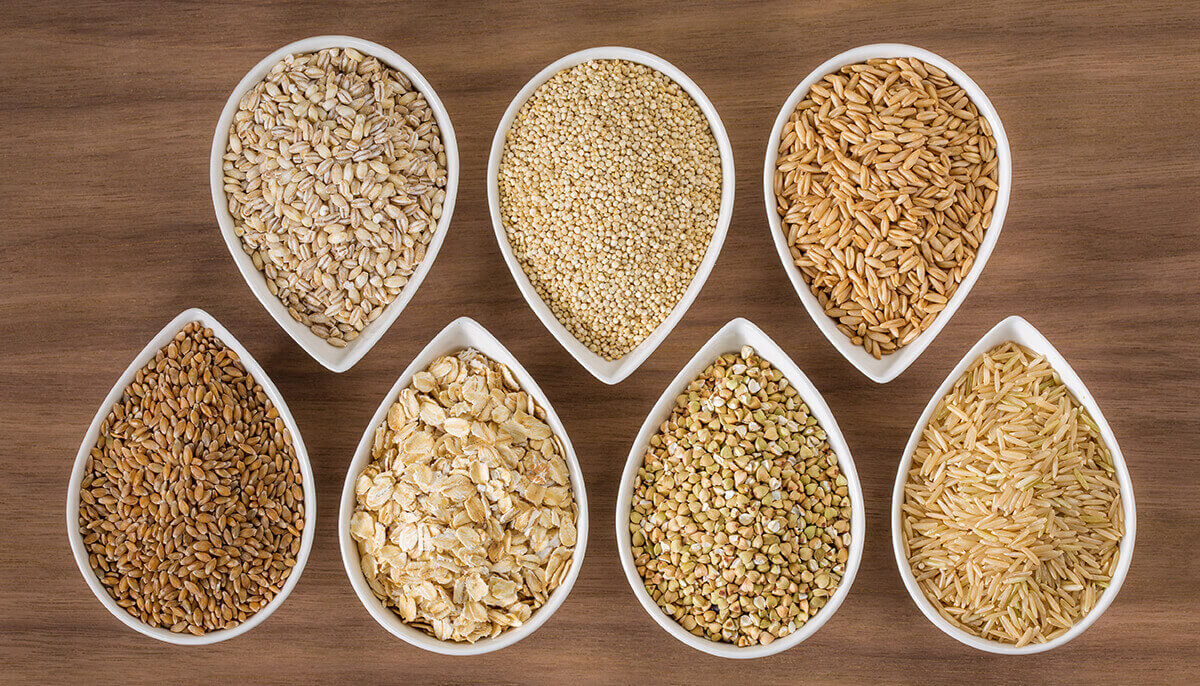What are the benefits of grains in a healthy eating pattern?

Grains are important sources of many nutrients, including fiber, B vitamins (thiamin, riboflavin, niacin and folate) and minerals (iron, magnesium and selenium). People who eat whole grains as part of a healthy diet have a reduced risk of some chronic diseases. The USDA recommends that half the day’s grain choices be whole grain.
Whole grains have not been milled and contain the entire grain kernel; milling gives a finer texture but removes the fiber, iron and B vitamins. Examples of whole grains include whole-wheat flour, oatmeal, whole cornmeal and brown rice.
Suggestions for incorporating whole grains into a healthy eating pattern include adding a whole-wheat bagel or toast to breakfast, eating a sandwich on whole-grain bread at lunch or including whole-wheat pasta with dinner.
How Many Servings
of Grains Are Recommended?
| Daily Recommendation | ||
| Age | No. of servings* | |
| Children | 2–3 years | 3 ounce equivalents |
| Children | 4–8 years | 5 ounce equivalents |
| Girls | 9–18 years | 5–6 ounce equivalents |
| Boys | 9–18 years | 6–8 ounce equivalents |
| Women | 19–50 years | 6 ounce equivalents |
| Women | 51+ years | 5 ounce equivalents |
| Men | 19–30 years | 8 ounce equivalents |
| Men | 31–50 years | 7 ounce equivalents |
| Men | 51+ years | 6 ounce equivalents |
*An ounce equivalent is equal to one regular slice of bread, ½ cup cooked oatmeal, ½ cup cooked pasta, 3 cups popped popcorn, ½ cup cooked rice or one small flour tortilla.
Whole grains have a positive impact on both heart and digestive health. Some of the nutrients in whole grains include:
Find out more about the relationship of a healthy eating pattern and activity to overall health by visiting the Healthy Eating page. For
online learning activities, check out the nutrition resources for online learning page.
Megan Holdaway, RDN, shares tips on how to make whole grains a part of daily eating patterns.
Watch hereLearn more about the next food group.